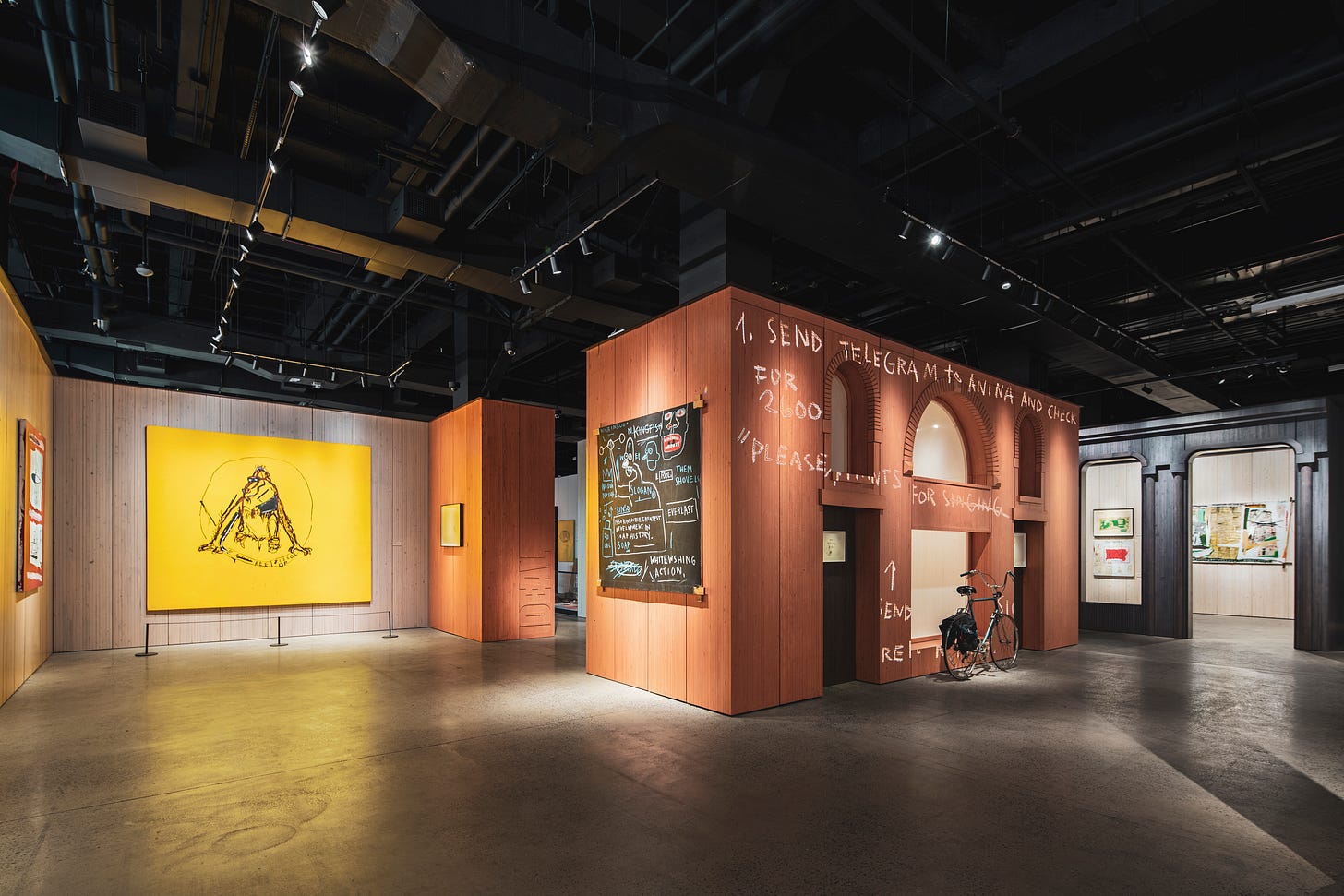Interview with Jeanine Heriveaux: Jean-Michel Basquiat touched the lives of countless people through his art
Interview with Jeanine Heriveaux, the visual artist Jean-Michel Basquiat's sister, who is one of the organizers and curators of the current King Pleasure exhibition in New York
Poster credit: Christopher Makos
In the pantheon of contemporary visual artists, the name Jean-Michel Basquiat towers high above. There are very few artists in the world who are considered to be representative of the ‘80s New York art scene and Jean-Michel Basquiat is one of them. Basquiat was deeply immersed in this bright city’s cultural life and he became one of its recognizable symbols and cultural icons. He was quite young when he fled from home, and firstly he started as a graffiti artist and even lived on the street. When he first emerged on NYC’s art scene in the early ‘80s it was a period that witnessed the flow and energy coming from graffiti artists and early hip hop. Basquiat’s career saw a rapid rise and was stellar, but unfortunately, it was cut very short in 1988. But in less than 10 years, he left behind an enormously diverse oeuvre that consisted of over 1000 paintings and 2000 drawings which had an effect and resonated deeply across distant and divided worlds that in other cases had little in common.
Everything about him i.e. his American and Caribbean heritage, his work as a graffiti artist (when he was known as SAMO), his love of music and connections to jazz and hip-hop, the issues that concerned him deeply, can all be found in his canvasses, sketches, drawings. What made Basquiat special was the ways he communicated burning social issues through his visually striking and intriguing paintings and drawings. His works were inspired by political issues, injustice, racism, and consumption i.e. topics that he found personally relevant. In his work, he was able to draw his inspiration from everywhere – street art, children’s drawings, graffiti, advertising, TV, and cartoons. One of the things that set him apart from the rest was the new way of communicating these burning issues and sources of inspiration through his art. These days, Basquiat’s work and legacy are even more important and current, as his oeuvre is still as relevant and visionary as when it was created.
In April 2022, organized and curated by Basquiat’s family, a sweeping exhibition titled “Jean-Michel Basquiat: King Pleasure” was opened at Starrett Lehigh Building in Chelsea NY. It is still undergoing as the demand to see and experience it doesn’t stop. The exhibition consists of over 200 never-before or rarely-seen paintings, sculptures, and sketches, and is replete with books, movies, jazz records, and various ephemera. What makes this exhibition different and fantastic is that the family envisioned it to show different stages and aspects of Basquiat’s life. This is not just a portrayal of his paintings in a gallery for people to admire but people are given the opportunity to experience things about him in a proper context either from his own viewpoint or his family’s. The exhibition thrills all the senses and opens new vistas.
The “King Pleasure” exhibition is divided into seven themes that encapsulate and navigate different stages of his life and work. The themes follow: “1960 - Introduction,” “Kings County,” “World Famous,” “Ideal,” “Art Gallery,” “Palladium,” a recreation of this nightclub’s VIP area, for which Basquiat created two enormous paintings in 1985 and the exhibition ends with “Place Jean-Michel Basquiat.” Further, several of the rooms have QR codes that lead to the four playlists on Spotify. Music and movies comprised a major part of Basquiat’s life and from his works, it is obvious they had a strong influence on him. It has been said that he was an avid record collector, whose collection included more than 3,000 records.
At the moment, concurrent with “King Pleasure”, two other major exhibitions of his works are hosted by the Montreal Museum of Fine Arts “Seeing Loud: Basquiat and Music” and “Basquiat: Of Symbols and Signs” at Albertina Museum in Vienna. These exhibitions only tell about the interest in Basquiat’s life and oeuvre and the high regard for his work.
I spoke to one of Basquiat’s sisters Jeanine Heriveaux about the thoughts and ideas behind this epic exhibition and the importance of his legacy.
Keep reading with a 7-day free trial
Subscribe to Vintage Cafe to keep reading this post and get 7 days of free access to the full post archives.






